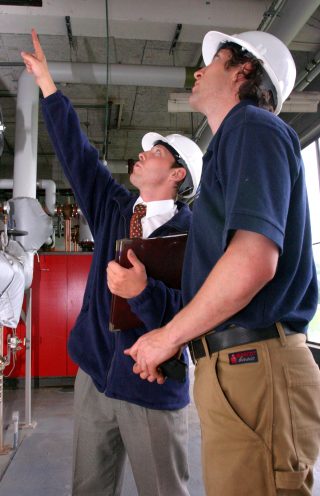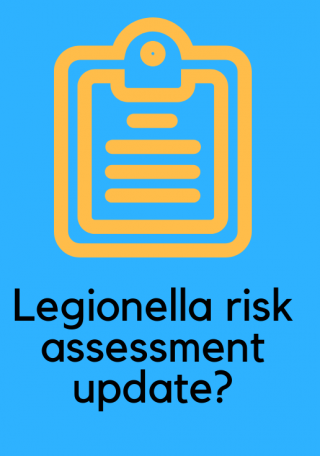How much should my Legionella risk assessment cost?
Legionella risk assessments: We are all faced with the current climbing inflation across products and services that we require. Compliance can be a huge concern, and we all want the best value without compromising the quality and level of service we receive from our suppliers.
This blog will hopefully shed some light on how to get a fair price for your legionella risk assessment and how you can compare your quotes against each other, allowing you to decide what you are confident with.
As a starting point, visit the legionella control association website, https://www.legionellacontrol.org.uk. All approved LCA Members must provide a range of products and services for the control of legionella bacteria in water systems. They would have also demonstrated that they have complied with the LCA Code of Conduct and LCA Service Standards and are committed to helping their customers prevent legionellosis and keep their water systems safe. The website allows you to search a directory of approved contractors within your area. ![]()
How much will a Legionella risk assessment cost?
A Legionella risk assessment is a consultancy service that will require a physical visit to your site, and follow-on report writing time to produce your document. For your chosen contractor, to provide an accurate quotation for your site, they will first need to establish how long the report will take to complete. Once this is figured out, multiply the time by a day rate, and bingo! A price.
Estimating how long a survey will take is a fine art, but there are some variables
![]() Ask what the standard day rate is for a surveyor, but be careful, some include administration time some don’t. Ask the question.
Ask what the standard day rate is for a surveyor, but be careful, some include administration time some don’t. Ask the question.
Geography?
Where is the site? Or where are the sites? Travel time is working time, and you pay for it. Ideally, you’ll use someone local if you have a big single site or cluster of buildings, but sometimes this isn’t practical. If you have multiple sites, you can get some great reductions from contractors out of your area allowing you to compare multiple quotes. Also, these are fun for the surveyors. Here at Dantek, we assess nationwide contracts including retail, care homes, and even memorial parks. The attending assessors have a great time traveling across the country.
Once you understand the logistics of getting the surveyor to and from the site, how long will they be there? The two big factors in this debate are what water services do you have? And how hard will they look?
Water Assets and system complexity?
I have seen many different approaches to convey what is on-site, varying from line-item asset registers, and copies of the previous risk assessments to lists of the gross internal areas of properties. The surveyor’s point of view generally stems from, how difficult is this system going to be for me to understand and how many assets will I have to survey. For example, a large modern office block could seem like a big beast but may only have a plant room in the basement, a single wet riser by the lift shaft, toilets and kitchenettes on each floor plus a couple of cleaners cupboards, simple. In contrast, a stately home converted to halls of residence can contain multiple systems and a dog’s breakfast of assets and pipework that would reduce the finest to tears.
![]() Legionella risk assessment – Top tip: Give what information you have, including building use, number of storeys, and location
Legionella risk assessment – Top tip: Give what information you have, including building use, number of storeys, and location
The industry refers to all hot and cold-water systems for toilets, sinks, showers etc. as domestic systems. These are almost universally included in risk assessments, but what about cooling towers, industrial uses of water, humidifiers, water features, and medical equipment? The survey should cover all water assets in one way or another.
In the industry, we benefit from huge amounts of experience so in talking about your buildings we build a picture of what we are dealing with, by being as honest and open as you can get the most realistic estimate possible.
Begin with the end in mind
The Legionella risk assessment certainly ticks a box for compliance but if done well is a tremendous source of information regarding your water assets. Think about practical outputs, for example, how do you expect to see non-compliances reported? Do you want them separated in a way you could pass to a mechanical contractor or your onsite plumbing team?
Talking to your suppliers about Legionella control in a wider context beyond the risk assessment can pay dividends in understanding how the document could support your efforts to implement a successful control regime later on. You’ll be amazed at what you can get for free during the risk assessment process just by asking, consider;
- Do you want accurate schematics drawn in AutoCAD?
- Would it be handy if the pipe runs are overlaid on your existing building schematics?
- Would you like an electronic copy of the asset register in excel?
- Do you want the assets in an electronic logbook?
At the end of the day
All Legionella risk assessment quotes have at their core have an estimation of how long the survey is going to take and the report to produce, as a buyer you should understand and be comfortable that your supplier will do a job that is acceptable to you in the time they have quoted. Industry rates vary from £350.00 to £600.00 per day for a qualified Legionella risk assessor as a guideline.
There are many decent companies out there, and all of them should welcome sensible discussions on the big question – how long is it going to take?
Dantek is a specialist provider of Legionella control services including Legionella risk assessments.
If you have any further questions or would like to speak to one of our sales team, please call us on 01454 417920 or e-mail sales@dantek.co.uk
Keep up to date with our news on Linked in.
https://www.linkedin.com/company/dantek-environmental-services-uk-ltd




